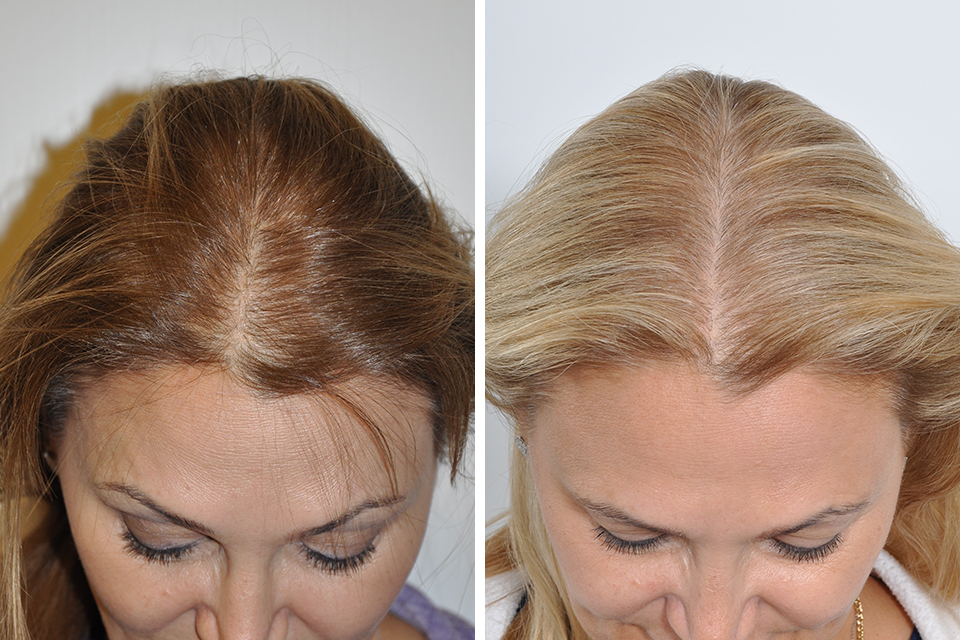Table Of Content

This technique can address hair loss in both men and women, regardless of hair type and diameter. It’s capable of producing excellent results on straight, wavy, or curly hair, and it’s also effective on all hair colors and textures. If you’ve seen any FUE before and after results, you’ll have noticed that the the precision of FUE allows for a natural-looking hairline and the illusion of more hair density. This is thanks to the transplanted hair growing in a pattern that mimics natural hair, making the results undetectable as a transplant. In the hands of an experienced surgeon, follicular hair extraction is a seamless process that paves the way for a successful FUE hair transplant.
No Visible Scars
This is typically when patients see a big breakthrough in their hair growth and start rounding the corner towards their legitimate results. By now, new hair should begin to grow out and match the growth patterns of your existing hair, creating a more natural appearance all around. The sapphire blades are more robust and made from a single synthetic sapphire crystal from aluminium oxide. This allows for accurate incisions, rapid healing and recovery and a better overall FUE hair transplant experience. It also has a bonus advantage – should you be allergic to metals, the Sapphire blades give you the confidence to continue with the procedure safely. To achieve the best results, follow these tips and learn more about if FUE hair transplants leave scars by reading this article on the potential for FUE scarring after your hair restoration procedure.

No Linear Scar
Dan Osborne shows off dramatic transformation after undergoing hair transplant - The Mirror
Dan Osborne shows off dramatic transformation after undergoing hair transplant.
Posted: Thu, 23 Nov 2023 08:00:00 GMT [source]
The FUE procedure varies from surgeon to surgeon in terms of setup, execution, sequence, instrumentation, staffing, anesthesia, etc. To describe the procedure in great detail may mislead the reader into thinking that what is described are actually universal steps recommended for all surgeons, and that is simply not the case. However, the fundamental components of the procedure remain the same. As hair grows longer, the ends of the hair tend to lighten from exposure to sunlight. When hair is first growing it may appear darker, and the ends tend to stick up. This can give the illusion of higher density when the hair is shorter.
Start Your Hair Restoration Journey
With bandages in place and your documents and medications in order, you may leave the clinic ready to begin your post-op journey. Usually, FUT is cheaper than FUE because FUT requires less surgeon labor to perform. However, with the onset of the “black market” where unlicensed technicians are performing the surgery, there may be cases where FUE may be less expensive than FUT. However, remember always that you get what you pay for, and ruining your donor area is an irreversible problem and irreplaceable source. Non-shaved FUE may be performed in select cases but requires much more labor and time and is usually charged at a higher price.
This is mostly determined by your genetics which makes each case unique. FUE (Follicular Unit Extraction) is a non-invasive method of hair transplantation that has a quick recovery rate and will give you the hair results that you desire. The FUE hair transplant is a permanent method of hair transplantation and is a great way to recover from hair loss.
Depending on the health of your transplanted hair, your hair may not grow back as thick as expected. Talk with your doctor about these risks and how much improvement you’re likely to get from the surgery. Your surgeon will have you wear bandages over your scalp for at least a day or two. They may also prescribe an antibiotic or an anti-inflammatory drug for you to take for several days.

In follicular unit excision (FUE), hair follicles are individually taken from the scalp using a small punch tool. (3,12) Healthy hair follicles are then implanted into the balding area of the scalp, known as the recipient site. This strip is meticulously dissected under a microscope into individual follicular units, which are tiny, naturally occurring hair groupings.
How The FUE Hair Transplantation Will Work
FUE Hair Transplants focus on restoring those follicles that no longer have any hair growth, with follicles that still have hair growth. After the implantation of the new follicles in the desired area, the blood vessels will provide nourishment to the new follicle that is producing the new hairs, and hair will begin to grow. The International Society of Hair Restoration Surgery (ISHRS) is a global non-profit medical association and the leading authority on hair loss treatment and restoration. Shaving your head can’t increase the rate of hair growth, or prevent balding. We stand out from the crowd when it comes to hair restoration clinics. We have put substantial time and research into pricing and structuring our procedures to benefit you, the patient.
Exosome – New Hair Loss Maintenance Therapy
Over the next six to twelve months, these hairs will grow and thicken, gradually restoring your natural hairline and density. Patience is key as the final results may take a year or more to fully develop. Within 2 to 3 weeks after surgery, the transplanted hair will fall out, but you should start to notice new growth within a few months. Some surgeons prescribe the hair-growing drug minoxidil (Rogaine) to improve hair growth after transplantation, but it’s not clear how well it works.
In the USA, follicle cryopreservation currently costs $2,500 plus a yearly storage fee of $125. One good example is African American hair restoration, which is often difficult to achieve with certain hair transplant techniques due to the coarser texture of African American hair. However, FUE can produce excellent results for this type, so it’s a viable option for those looking to restore their lost hair without having to resort to staples or stitches. After the procedure, you can expect to see new hair growth in the treated areas within 3 to 4 months, with the final results visible after a year. The transplanted hair will grow just like your natural hair, and you can cut, style, and color it to your preference.
Unlike FUT, which leaves behind a linear scar on the posterior of the scalp, FUE results in thousands of tiny extractions, leaving only faint dots on the scalp’s surface. These dots seamlessly blend with the surrounding hair, rendering FUE an excellent option for individuals who prefer to maintain shorter hairstyles. There is even a study that showed 90% of 820 patients were satisfied with a year-long result, but how is that? In an FUE procedure, the dominant donor hairs are transplanted to the bald area and stay there for a lifetime.
A hair transplant involves healthy hair follicles being removed from a healthy area of your scalp and implanted into the balding area. ’ Although it’s a very effective treatment, it isn’t a permanent cure for hair loss. (11) However, if your question is, ‘will a hair transplant last’, the answer is yes.
It’s ideal for those who prefer short hairstyles and desire a discreet, natural-looking outcome with minimal downtime. You should factor in time off work for recovery when considering the cost. Most companies don’t cover hair transplants under medical leave policies. FUE was meant to replace the “classic” follicular unit transplantation (FUT) technique.

No comments:
Post a Comment